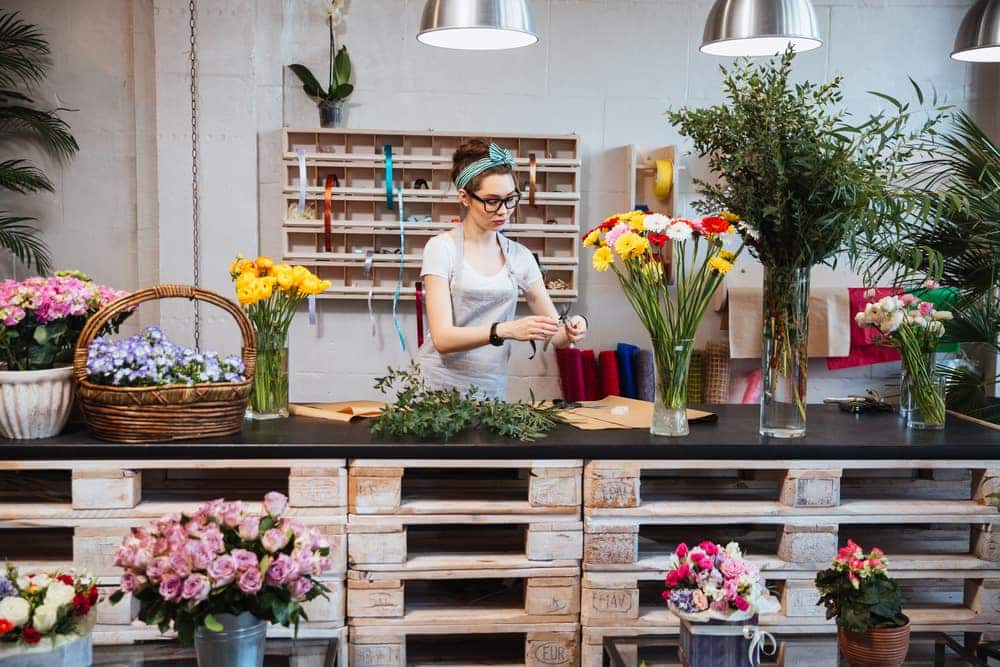SWOT Analysis for a Florist (Example)

A SWOT analysis is crucial for developing a business plan for a florist. This analysis, which stands for Strengths, Weaknesses, Opportunities, and Threats, helps in understanding internal and external factors that can impact your business. Strengths and weaknesses are internal to the business, while opportunities and threats are external.
In this article, we will explore various examples of strengths, weaknesses, opportunities, and threats, aiding florist owners in incorporating these insights into their business strategies.

Strengths
Highlight strengths that differentiate your florist business, fostering customer satisfaction and loyalty.
- Artistic Floral Designs and Expertise: Offering unique and creative floral arrangements, along with skilled floral design expertise, sets the florist apart.
- Example: Showcase artistic designs in storefront displays and social media, emphasizing the florist’s creative prowess and quality craftsmanship.
- Strong Local Supplier Relationships: Establishing robust partnerships with local growers or suppliers ensures access to fresh and diverse floral inventory.
- Example: Highlight the use of locally sourced flowers to promote sustainability and quality to eco-conscious customers.
- Personalized Customer Service: Providing exceptional customer experiences and personalized service fosters repeat business and referrals.
- Example: Focus on attentive service, customized floral recommendations, and prompt delivery to enhance customer satisfaction and loyalty.
- Multiple Sales Channels: Operating through various channels like in-store sales, online orders, and event collaborations expands market reach.
- Example: Invest in an intuitive e-commerce platform, leverage social media for marketing, and collaborate with event planners for weddings or events.
Weaknesses
Address weaknesses to fortify the florist’s market position and operational efficiency.
- Seasonal Flower Availability: Reliance on seasonal blooms might limit floral options and impact inventory during certain periods.
- Example: Diversify offerings with alternative blooms or focus on unique floral arrangements that transcend seasonal limitations.
- Highly Perishable Inventory: Managing highly perishable products presents challenges in minimizing waste and optimizing inventory turnover.
- Example: Implement efficient inventory management systems and creative bouquet repurposing to minimize waste and manage stock effectively.
- Competition from Online Florists: Intense competition from online florists might affect foot traffic and local customer retention.
- Example: Emphasize unique designs, personalized service, and quick delivery to differentiate from online counterparts.
- Reliance on Events or Holidays: Dependency on seasonal events or holidays for substantial sales might result in revenue fluctuations.
- Example: Explore business opportunities such as corporate subscriptions or workshops to diversify revenue streams.
Opportunities
Identifying prospects to augment and expand the florist’s market reach and relevance.
- Wedding and Event Collaborations: Partnering with event planners or venues for weddings and events expands clientele and visibility.
- Example: Establish partnerships with local event planners and wedding venues, offering exclusive floral packages and services.
- Subscription Services and Corporate Accounts: Offering subscription services or catering to corporate accounts secures consistent revenue streams.
- Example: Introduce floral subscription services for regular customers or corporate accounts for office decor or client gifting.
- Local Community Engagement and Workshops: Hosting floral workshops or engaging in community events enhances brand visibility and customer engagement.
- Example: Conduct flower arranging classes or participate in local festivals to showcase expertise and foster community ties.
- Specialized Floral Services or Niche Offerings: Introducing niche services like preserved flowers or unique floral art diversifies product offerings.
- Example: Offer preserved floral arrangements or custom floral installations for special events or home decor.
Threats
Anticipate and prepare for threats to ensure the florist’s resilience and adaptability.
- Economic Downturns and Consumer Spending Shifts: Economic fluctuations might impact discretionary spending on luxury items like flowers.
- Example: Offer promotions, bundle deals, or loyalty rewards during economic downturns to maintain customer engagement.
- Changing Floral Trends and Preferences: Evolving floral design trends may affect customer preferences and demand for certain floral styles.
- Example: Stay updated with design trends, seek customer feedback, and adapt floral arrangements to align with changing tastes.
- Supply Chain Disruptions and Seasonal Changes: Disruptions in the supply chain or seasonal variations might affect flower availability and pricing.
- Example: Build relationships with multiple suppliers, explore alternative sourcing, and adjust pricing strategies to navigate supply challenges.
- Regulatory Changes and Environmental Factors: Alterations in environmental regulations or climate changes might impact flower imports or availability.
- Example: Stay informed about environmental regulations, focus on locally grown flowers, and emphasize sustainability practices to address environmental concerns.





